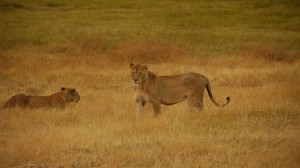Craziness here at the Kathmandu airport! (situation normal). Among the things that you don’t see inside the waiting area at other international airports are monkeys and birds. They were too fast for a photo.
Getting ready to leave the comforts of the Yak & Yeti and head to the airport for our flight to Lukla and the start of our trekking!
We just finished a wonderful 4 night safari in Tanzania, visiting the Serengeti, Tarangire, and Ngorongoro Crater Wildlife parks. We saw so many animals and enjoyed the wonderful Sopa lodges along the way, it was a very relaxing and wonderful experience!
Now we are off to Kilimanjaro to begin our first day hike up to the Machame Camp. Our plan is to spend a total of 6 nights and 7 days on Kili climbing to the top and back down. We are looking forward to climbing through the rainforest, mooreland, alpine desert, and ice cap zones on the mountain. I will be using the RainOn tracking system so you can follow our climb up to the top of the mountain!
Garrett Madison
Photo: The team at Gibb’s Farm yesterday on the way back to Arusha from a 5 day safari!







